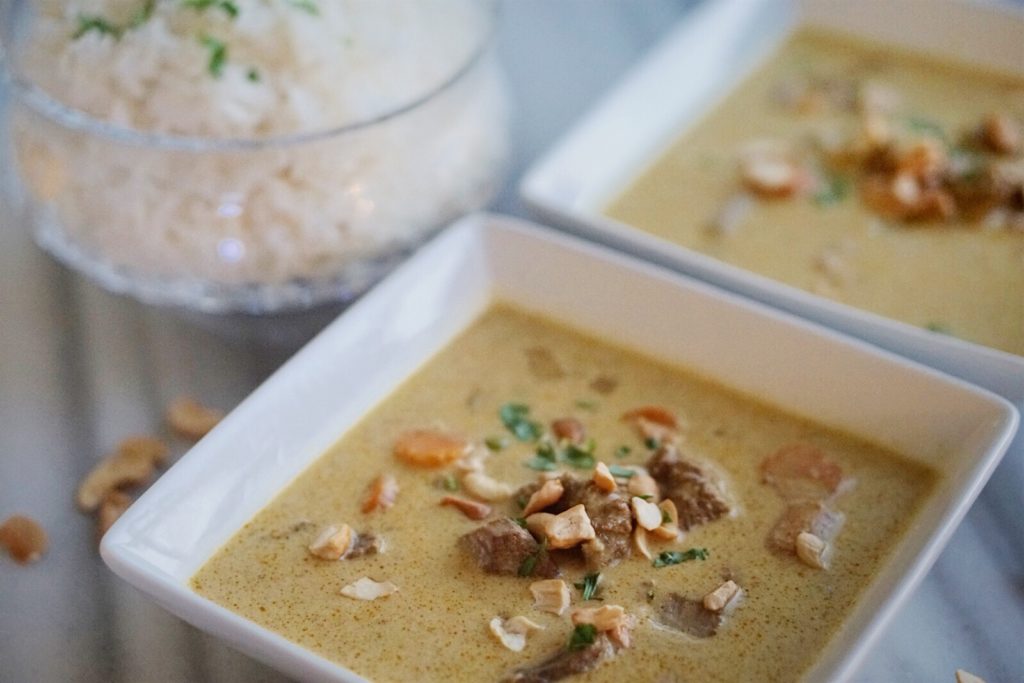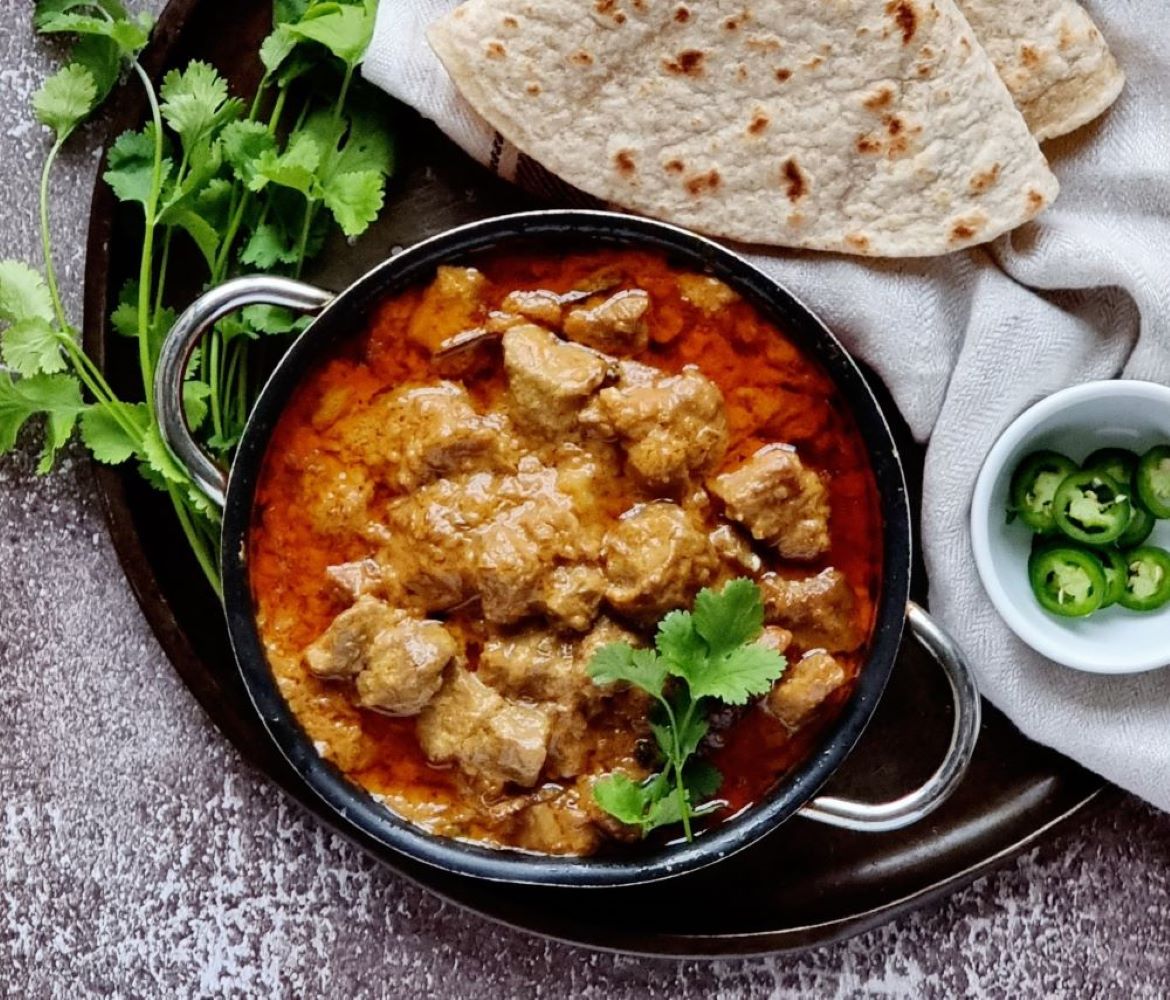In the realm of culinary traditions, authentic lamb korma stands as a testament to the rich heritage of Indian cuisine. Originating from the Mughal era, this delectable dish has evolved over centuries, blending exotic spices and succulent lamb to create a harmonious symphony of flavors.
Whether it graces the tables of royal feasts or humble homes, lamb korma embodies the essence of Indian hospitality and culinary artistry. Its fragrant aroma and tantalizing taste have captivated palates worldwide, making it a beloved dish that transcends cultural boundaries.
Introduction

Authentic lamb korma recipes hold a significant place in culinary traditions worldwide, renowned for their aromatic flavors and rich cultural heritage. This delectable dish traces its origins back to the kitchens of the Mughal Empire, where it was meticulously crafted by skilled chefs.
The term “korma” is derived from the Urdu word “qorma,” meaning “braised.” This cooking technique involves slowly simmering meat in a flavorful sauce, resulting in tender, melt-in-your-mouth meat infused with a symphony of spices and aromatics.
Cultural Origins
Lamb korma originated in the royal kitchens of the Mughal Empire, a vast and opulent empire that ruled over much of South Asia from the 16th to the 19th centuries. Mughal cuisine was heavily influenced by Persian and Indian culinary traditions, resulting in a unique blend of flavors and techniques.
Korma dishes were often served at lavish feasts and banquets, where they were enjoyed by royalty and nobility. The slow-cooked nature of the dish allowed the flavors to develop and meld together, creating a culinary masterpiece.
Ingredients and Preparation

Authentic lamb korma requires a symphony of spices and ingredients to achieve its rich and flavorful profile. The following are the essential components:
- Lamb: Boneless and cut into 1-inch cubes
- Spices: Ground cumin, coriander, turmeric, red chili powder, garam masala
- Herbs: Fresh ginger, garlic, cilantro
- Other: Plain yogurt, tomato puree, onion, ghee or vegetable oil
The preparation process unfolds as follows:
Marination
Combine the lamb with the yogurt, ginger-garlic paste, and spices. Marinate for at least 4 hours or overnight.
Cooking
Heat ghee or oil in a large pot or Dutch oven. Brown the marinated lamb in batches. Remove the lamb and set aside.
In the same pot, sauté the onions until translucent. Add the tomato puree and cook for 5-7 minutes.
Return the lamb to the pot and add enough water or stock to cover. Bring to a boil, then reduce heat and simmer for 1-1.5 hours, or until the lamb is tender.
Assembly
Stir in the garam masala and cilantro. Serve hot with rice or naan bread.
Spices and Flavor Profile
Lamb korma is renowned for its intricate blend of spices that creates a harmonious balance of flavors. These spices not only enhance the lamb’s natural taste but also impart a distinctive aromatic profile to the dish.
The key spices used in lamb korma include:
- Cumin: A warm and earthy spice that adds a nutty flavor and depth to the dish.
- Coriander: A citrusy and slightly sweet spice that balances the earthy flavors of cumin.
- Turmeric: A vibrant yellow spice that imparts a warm and slightly bitter flavor, as well as a rich golden hue to the korma.
- Garam masala: A complex blend of spices that typically includes cinnamon, cloves, cardamom, and nutmeg, adding a warm and aromatic finish to the korma.
li> Red chili powder: A blend of dried and ground red chilies that adds a subtle heat and vibrant color to the dish.
The harmonious balance of these spices creates a symphony of flavors that tantalizes the taste buds. The earthy notes of cumin and coriander blend seamlessly with the warmth of turmeric and the subtle heat of red chili powder, while the aromatic garam masala adds a touch of elegance and complexity to the dish.
Variations and Adaptations
Lamb korma exhibits regional variations, reflecting the diverse culinary traditions of India.
Regional Variations
In Northern India, lamb korma typically features a creamy, yogurt-based sauce with a blend of aromatic spices like cardamom, cinnamon, and cloves. In contrast, South Indian versions often use coconut milk as the base, resulting in a tangy and slightly sweet flavor profile.
Kashmiri lamb korma is known for its use of saffron and rose petals, giving it a distinctive floral aroma.
Dietary Adaptations
To accommodate dietary preferences, the recipe can be easily adapted. For a milder flavor, reduce the amount of chili powder or omit it altogether. To make the dish gluten-free, use gluten-free flour to thicken the sauce. Vegetarian or vegan adaptations involve substituting lamb with tofu or chickpeas, while maintaining the same spice blend and cooking technique.
Personalizing the Flavor
Personal tastes can also be accommodated by adjusting the spice levels. For a spicier korma, add more chili powder or chopped green chilies. Alternatively, tone down the heat by reducing the chili powder and adding a pinch of sugar to balance the flavors.
Experimenting with different combinations of spices, such as adding a hint of nutmeg or mace, can create unique and flavorful variations.
Presentation and Accompaniments
Lamb korma is traditionally presented in a shallow serving bowl, garnished with fresh cilantro and ginger juliennes. The rich, golden-orange sauce is poured over the tender lamb pieces, creating a visually appealing dish.
Suitable accompaniments for lamb korma include:
Rice
- Basmati rice is a popular choice, as its long, slender grains absorb the flavors of the korma sauce well.
- Jeera rice, flavored with cumin seeds, adds a subtle earthiness to the meal.
Flatbreads
- Naan, a soft and fluffy flatbread, is a classic accompaniment for lamb korma.
- Roti, a whole-wheat flatbread, provides a slightly chewy texture that complements the dish.
Salads
- Raita, a cooling yogurt-based salad, helps balance the richness of the korma.
- Cucumber salad, made with thinly sliced cucumbers and a tangy dressing, adds a refreshing element to the meal.
Conclusion
As we delve into the intricacies of an authentic lamb korma recipe, we not only uncover a culinary masterpiece but also embark on a journey of cultural exploration. From the fragrant blend of spices to the tender, succulent lamb, every element of this dish is a testament to the passion and artistry that defines Indian cuisine.
Whether you seek to recreate this culinary treasure in your own kitchen or simply appreciate its rich history and flavors, this authentic lamb korma recipe is a testament to the enduring legacy of Indian culinary traditions.
FAQ Summary
What is the key to achieving the authentic flavor of lamb korma?
The secret lies in the harmonious balance of spices, which includes a blend of garam masala, cumin, coriander, turmeric, and red chili powder. These spices are carefully toasted and ground to release their full aromatic potential.
Can I substitute yogurt with other dairy products in the marinade?
Yes, you can use buttermilk or sour cream as a substitute for yogurt. However, yogurt is preferred as it tenderizes the lamb more effectively and adds a subtle tanginess to the dish.
What is the best way to serve lamb korma?
Lamb korma is traditionally served with steamed rice or flatbreads like naan or roti. It can also be paired with a refreshing salad or raita to balance the richness of the dish.
